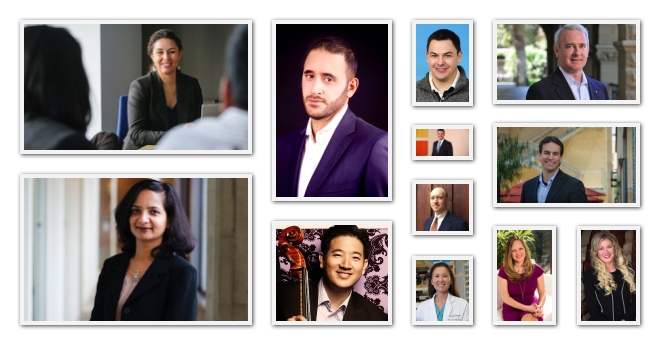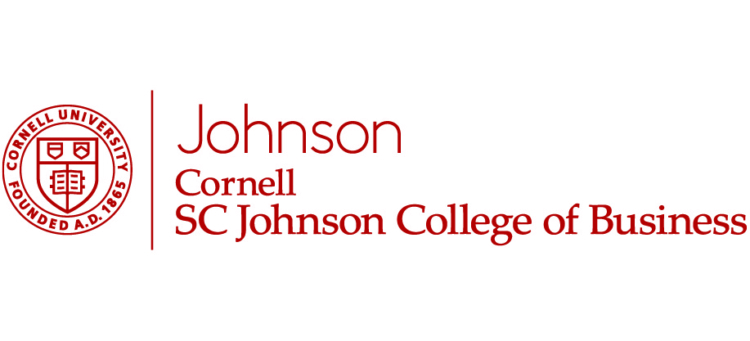
Some of the graduates in P&Q’s Best & Brightest roster of EMBAs in the Class of 2016

Sometimes, it’s easier to attack the messenger than to understand the problem. That was the situation facing Cheryl Campbell as she testified before Congress in 2013. The senior vice president of CGI — the IT contractor that orchestrated the launch of healthcare.gov (i.e. Obamacare’s website) — Campbell was tossed into the political gladiator pit. With the website dogged by bottlenecks and bugs, she faced a wall of finger-pointing and nitpicking, where critics seemed more intent on scoring points and pushing agendas than offering solutions.
Then again, few beyond Campbell could grasp the true scope of the project, which involved managing unparalleled technical intricacies and bearing the weight of accompanying “national, political, financial, legal, and media complexities.” According to Bloomberg, the former included the management of 55 different subcontractors. And that meant stitching together thousands of interconnected pieces so users could interact with, in Campbell’s words, “five different agencies, including HHS, DHS, U.S. Treasury, VA, and SSA, clearing them all simultaneously with the ability to address over 15,000 insurance plans across 50 states and four territories privately and securely.”
After its growing pains, healthcare.gov has rebounded to enroll 12.7 million users, according to the latest figures from the U.S. Department of Health and Human Services. And Campbell — a 2016 graduate of the Georgetown-ESADE Global Executive MBA program — considers her leadership in implementing the Affordable Care Act to be her crowning achievement. So far. Of course, she has no plans to rest on her laurels. In fact, her EMBA experience has only whetted her appetite to keep learning.
“As a senior executive, the years of practical experience are invaluable,” Campbell tells Poets&Quants. “But it is equally important to continue hone your craft and recognize a broader set of leading industry proven methodologies, go-to market strategies, and a 360-degree macroeconomic view of business and the world economy.” And she has a word of advice for MBAs everywhere: “Continue to invent and invest in yourself!”
CLASS RANGES FROM A TOP NEUROSURGEON TO A 63 YEAR-OLD COMIC
Reinvention and self-investment have always been driving forces behind MBAs, even more so among the 50 leaders who comprise Poets&Quants’ 2016 Best & Brightest Executive MBAs. For many, returning to campus was a monumental step. Suddenly, these top performers were squeezing another 20 to 30 hours of work into their already cramped and chaotic weekly schedules. They continuously shifted priorities between work, family, and school, wrestling with the guilt that they couldn’t always be perfect — or present, for friends, family, community. Sometimes, they were driven from their comfort zones, as they learned to leverage team strengths over individual talents and proven practices over gut instincts.
For every triumphant “a-ha” epiphany they enjoyed, they endured a humbling “uh-oh” moment that reminded them how far they still had to go.
By the numbers, P&Q’s second annual list of top EMBAs mirrors the ever-diverse nature of business schools themselves. These graduates range in age from 29 to 63, with 40.7 years being the average. They were equally split between men and women at 25 a piece. However, American schools held a decided advantage in selections: 41 of the 50 spots — a split that reflects the EMBA programs that responded (28 American schools and eight from overseas). The class’s alma maters stretch from Lagos State (Nigeria) to Graceland University (Iowa). And their business role models range from Elon Musk to Mother Teresa. They include decorated military officers and acclaimed surgeons, not to mention Juilliard-trained cellists and accidental entrepreneurs. Aside from the U.S. military, just one employer boasts two executives on the list — the Toronto Symphony Orchestra (from two different programs, no less).
Among the 50 Best & Brightest who answered, 38 had a significant other, while another 36 were raising children during school. For this group, the executive MBA was the undisputed preference, with just four nominees even considering an online program.
A ROCKET SCIENTIST TURNED NAVY SEAL? ONLY IN THE MOVIES — OR AT UCLA
And why would they? Who wouldn’t want to sit alongside SMU’s Brian Scott Cossiboom, the director of operations for the Office of George W. Bush? UC-Irvine’s 2016 class includes Christopher Yarbrough, a design engineering manager who has won awards from organizations like NASA for helping to develop optical systems that have been used to study Mars and Jupiter. Cornell’s April Salas oversees planning and analysis for emergency response at the U.S. Department of Energy. Susan Moffatt-Bruce is the academic director of the Ohio State University Wexner Medical Center, consistently ranked among the best academic medical centers by the University HealthSystem Consortium. And Georgetown’s Ellen Davis is the senior vice president of research and strategic initiatives at the National Retail Federation, where her claim to fame is coining the phrase, “Cyber Monday.”
In fact, some figures from this year’s class seem almost larger than life. Take UCLA’s Christian Dunbar, a 23-year Navy SEAL who is the deputy commander for the U.S. Naval Special Warfare Center. The recipient of several Bronze Stars and Service Medals (among other awards), Dunbar had to leave UCLA’s EMBA program for a time so he could lead special forces operations inside Afghanistan, which included (in Dunbar’s words) “11 different battalions, from seven different countries, 13 different governmental and non-governmental agencies with over 6,000 personnel with NO positional authority over the networked organization.” Coordinating such efforts required the mind of a rocket scientist — so Dunbar’s M.S. in space systems operations from the Naval Postgraduate School came in handy.
Next Page: From an Olympian to President Obama’s Marine One Pilot — The Best & Brightest Before Business School (Find 50 Student Profiles on Page 4)





Questions about this article? Email us or leave a comment below.